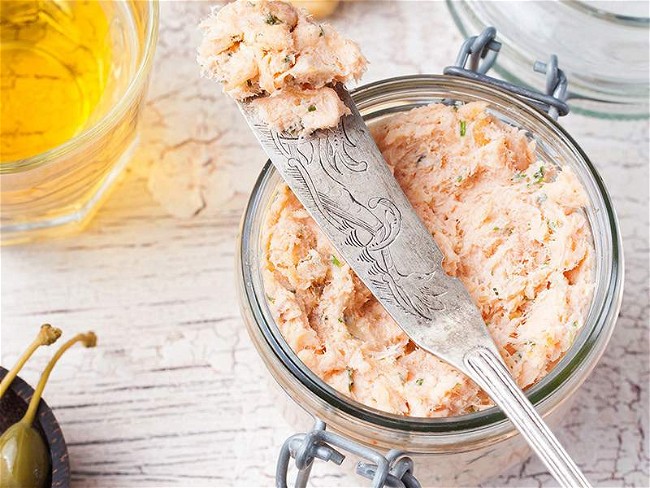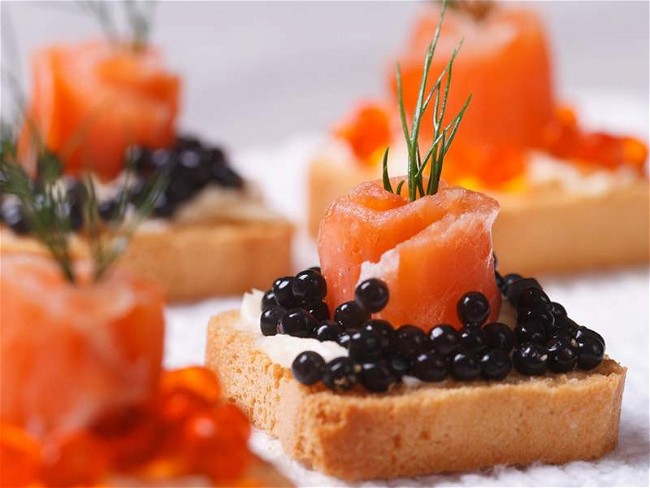How to Smoke Fish at Home

Smoking fish dates back thousands of years to indigenous cultures, with the original purpose of preserving a catch for longer periods in the absence of refrigeration. The process was a combination of drying, salting, and exposing the fish to smoke, which helped extend its shelf life. Over time, smoking fish also became a way to enhance its flavor and texture. Today, smoking fish continues to be a popular culinary tradition enjoyed worldwide, showcasing the artistry and versatility of this ancient preservation method. The typical steps are choosing your seafood and smoking wood, curing the seafood, then smoking it.
In this guide, we will equip you with the knowledge and techniques needed to create mouthwatering smoked fish that will impress your family and friends, using either a smoker or a home grill.
Why Is Fish Smoked?
Smoking imparts a distinct smoky flavor that enhances the taste of and tenderizes the fish. Additionally, smoking fish helps to preserve it by reducing its moisture content and inhibiting the growth of bacteria, thus extending its shelf life without any “fishy” smell. Smoking also imparts a desirable texture to the fish, making it tender and flaky. Furthermore, smoking fish is a healthier cooking method compared to frying or grilling, as it requires minimal added fats and oils.
What Do I Need to Smoke Fish at Home?
To smoke fish at home, you will need the following essential equipment:- An outdoor grill or smoker: Provides the necessary heat and environment for the smoking process.
- A meat thermometer: Helps monitor the internal temperature of the fish to ensure it is thoroughly cooked.
- Wood chips or pellets: Essential for producing the desired smoky flavors. Different woods impart distinct flavors to the fish, and a variety of smoking wood can be found online or at your local grocer.
- Aluminum Foil: Useful for creating smoke packets to enhance the smoking process.
How Can I Use My Grill As A Smoker?
Smokers are different from grills because they utilize indirect heat, with which the heat source is separated from the food. This indirect heat creates a controlled environment that allows for slow cooking and smoking.
While it may not achieve perfection, you can easily turn your electric, propane, or even charcoal grill into a smoker by creating your own indirect heat zones. To do this, you will preheat one side of the grill to the desired smoking temperature while leaving the other side unlit.
Soak your wood chips in water for 30 minutes, then drain and place them in a foil packet with some holes poked in it. Position the foil packet directly on top of the lit burner or coals. Place the seafood on the unlit side of the grill, ensuring it is not directly over the heat source. Close the grill's lid to trap the smoke and maintain a steady temperature. Monitor the temperature with a thermometer and adjust the grill's vents as needed to control the heat and smoke levels.
Which Fish Can I Smoke?
Salmon is the most popular smoked fish around the globe, and smoking any species of salmon can yield unique results. For that reason, there are endless smoked salmon recipes, from candied salmon to smoked salmon dip. Salmon, however, is just the beginning of the long list of seafood that you can smoke.
While it is possible to smoke any type of seafood, those with higher fat content are particularly well-suited for this cooking method. We highly recommend trying smoking with salmon, mackerel, swordfish, or oysters first. Their high fat content allows them to absorb and retain the smoky flavors more effectively, resulting in a more pronounced and satisfying taste. Additionally, the higher fat content also helps to keep the seafood moist during the smoking process, preventing it from drying out and resulting in a more succulent and tender texture.
Leaner fish like halibut, whiting, and cod can be smoked as well, but they may require extra care and attention to prevent them from becoming too dry or bland. Therefore, starting with fish that have a higher fat content is recommended for those new to smoking, as they provide a more forgiving and enjoyable smoking experience.
Which Wood Do I Use To Smoke Fish?
Wood is used as a seasoning when smoking fish. Each species of wood imparts distinct flavors and smokiness. Here are our recommended wood pairings for your seafood:- Salmon readily absorbs smoky flavors with its rich, fatty flesh. Fruitwoods like apple or cherry add pleasantly sweet and subtle notes that complement the natural taste of salmon.
- Mackerel and similar delicate, oily fish benefit from stronger woods like hickory and mesquite, bringing out the best in these fish with moderate smoky flavors.
- Swordfish, known for its meaty texture and robust flavor, pairs well with hardwoods like pecan or oak. These woods provide a strong smoky flavor that can stand up to the boldness of swordfish, adding depth and intensity.
- Oysters have a delicate and briny flavor, which require milder woods such as beech or alder. These woods provide a gentle smoky essence without overpowering the natural deliciousness of oysters.
You can also experiment with different wood combinations to create unique flavor profiles. If specialty wood chips are unavailable, mild woods like alder and beech from local grocery stores are suitable for smoking all types of seafood.
What Is Curing Seafood?
Curing is the process of preserving and flavoring food, such as fish, by treating it with salt and/or sugar. The curing process helps to mitigate bacteria growth in low cooking temperatures and firm up the texture of the fish, making it easier to handle during the smoking process. By combining curing and smoking, the fish becomes more flavorful, moist, and tender, creating a delightful eating experience.
How Do I Cure Seafood Before Smoking It?
Seafood is cured with either a dry rub or a wet brine before smoking. We recommend curing fish with a dry rub before hot smoking to create a crust (or bark), and a wet brine before cold smoking to retain moisture in the longer cook. Please note that curing is only necessary for finfish, and oysters do not need this step. Fresh oysters come with a delightful, natural brine from their juices.
You can dry-cure fish by generously coating it with equal parts salt and sugar, plus any additional seasonings like our Salmon Rub or pepper (optional). Place the seasoned fish in the refrigerator for a few hours or overnight. Take it out of the refrigerator and you’re ready to smoke!
To create a wet smoked fish brine, mix 1 quart of cold water with ½ cup of sea salt, ¾ cup of brown sugar, and any additional seasonings like peppercorns and lemon zest (optional) in a deep tray. Fully submerge the fish and refrigerate it for several hours or overnight before smoking. Pat the fish dry before placing it in your grill or smoker and you’re ready to smoke!
Techniques for Smoking Fish at Home
How Do I Hot Smoke Seafood?
Hot smoking is a method that slowly cooks seafood, with the presence of smoke, at a consistent temperature range of 200-225°F (93-107°C). This method results in shorter smoking times than cold smoking.
Dry-cure your fish overnight before smoking. Once cured, or simply shucked on the half shell for oysters, bring your grill or smoker to the desired temperature. Because your goal is to simultaneously achieve a nice bark on the outside and an internal temperature of 145°F (63°C), we recommend 225°F (107°C) for oysters or small filets, and 200°F (93°C) for thick filets or whole fish.
Soak a generous handful of wood chips in water for 30 minutes, then drain and place them on aluminum foil, making a packet and poking holes in it with a knife. Place this packet directly over your heat source.
Place your seafood in the indirect heat zone and smoke it until it reaches an internal temperature of 145°F (63°C), 15-25 minutes for oysters and 1-2 hours for filets, swordfish steaks, or whole fish.
Your end result will be smoky, flaky seafood. We recommend serving it as small chunks with a knife or flakes as a fork. In the case of oysters, we recommend presenting them whole on the half shell.
Cold Smoking on a Home Grill
Cold smoking imparts a more delicate smoky flavor to seafood than hot smoking, achieved by maintaining lower temperatures between 60-80°F (16-27°C). The process involves longer smoking times and requires proper ventilation to prevent the seafood from cooking.To cold smoke seafood, start by curing the fish with a wet brine overnight, or by shucking your oysters on the half shell. Once cured, prepare your grill or smoker by setting it up for indirect heat and maintaining a temperature range of 60-80°F (16-27°C).
Soak two handfuls of wood chips in water for 30 minutes, then drain and place them on aluminum foil, making two packets and poking holes in them with a knife. Place one packet directly over your heat source. The second packet may be necessary if your first one gives out during this long smoke. Ensure that your grill or smoker has proper ventilation, either with a chimney or by keeping the lid cracked open.
Arrange the cured seafood in the indirect heat zone, allowing space between each piece for the smoke to circulate. Monitor the smoking process closely, as cold smoking can take anywhere from 6 to 12 hours depending on the desired flavor intensity.
Doneness for cold smoked seafood can be subjective, depending on personal preferences. As a loose guideline, we recommend looking for these signs:
- The texture should be firm and slightly springy when gently touched. It should not feel raw nor overly soft.
- The exterior of the seafood should have a light golden sheen, indicating that it has absorbed the smoky flavors. Be cautious not to let it become too dark, as it can result in a bitter taste.
- Taste a small piece and evaluate the flavor. It should have a pleasant smoky taste that is well-balanced and complements the natural flavors of the seafood.
After the desired smoking time, refrigerate the smoked seafood to preserve its freshness. Cold smoked seafood will have a more translucent appearance compared to hot-smoked varieties, and it can be enjoyed as small chunks or flakes, or even presented whole for certain seafood like oysters.
Your end result will be delicately smoky and tender. We recommend serving it either thinly sliced against the grain or tissue, or as small chunks flaked by a fork. You may present cold smoked oysters whole on the half shell.
Tips for Smoking Any Fish
Here are a few tips to help you smoke any fish at home:- Remember to always prioritize food safety and follow proper smoking guidelines to ensure the best results and enjoyable dining experience.
- If specialty wood chips are unavailable, mild woods like alder and beech from local grocery stores are suitable for smoking all types of seafood.
- Opt for seafood with high oil or fat content for the best results when starting to smoke fish. If you’re up for a challenge, try smoking leaner fish like halibut, cod, or whiting.
- Adjust smoking times and temperatures based on the thickness of the filets or whole fish to achieve proper doneness.
- Fill a spray bottle with equal parts water and apple juice to retain moisture during hot smoking, ensuring juicy and flavorful results.
- To add smoky flavors to a simply grilled seafood, soak a cedar plank in water for 30 minutes and grill your seafood directly on it.
Recipes Using Smoked Fish
This luscious smoked salmon paté takes seconds to come together in your food processor and makes an elegant appetizer.
Caviar & Smoked Salmon Canapés Recipe
Smoked salmon, rich cheeses, and nutty sturgeon caviar meld into one blissful bite with this stunning seafood appetizer.


